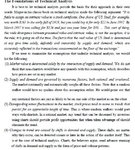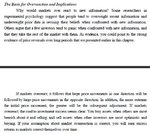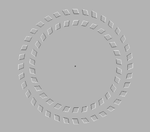weakpunter
Member
- Messages
- 92
- Likes
- 6
DT,
I´d say 90% of people fail in whatever they do, how many traders dont make money period compared to how many do? wether technical or not, how many sports players make pro grade?
how many attorneys end up with their own practice, the bottom line is that most people
dont achieve large scale financial success in anything they set to do as a career, most people are wrong in just about anything the take on in order to make substancial financial gain ...so why would trading be any different , that dosent mean you shouldnt trade technically or fundamentally or price action , why are there so many well academically educated poor people in this world, tis because the bottom line is 90% is the failure rate for anything. The only chance anyone has got is thinking against the grain whatever analysis they use, everything is open for your own interpretation or perception , take support and resistance a very understandable concept , I may use it in a very different way to the standard TA user ..does that mean Iam using TA or not example, I will buy into resistance or sell into support based on the fact if I beleive the majority of traders beleive that those levels are good support or resistance are usually falling into the 90% of failures, so what am I using then TA or not , I still think Iam using TA just in a different fashion to most people, on the other hand I may bid unobvious support levels or offer unobvious resistance levels that others would say are not going to hold because they havent been historically well proven yet, I still think Iam using TA but in a different way and I may chop and change my methods ,strategies indicators accordingly to what I see.....bottom line is the need to adapt and have belief in the fact that you dont have to have conclusive belief.
I´d say 90% of people fail in whatever they do, how many traders dont make money period compared to how many do? wether technical or not, how many sports players make pro grade?
how many attorneys end up with their own practice, the bottom line is that most people
dont achieve large scale financial success in anything they set to do as a career, most people are wrong in just about anything the take on in order to make substancial financial gain ...so why would trading be any different , that dosent mean you shouldnt trade technically or fundamentally or price action , why are there so many well academically educated poor people in this world, tis because the bottom line is 90% is the failure rate for anything. The only chance anyone has got is thinking against the grain whatever analysis they use, everything is open for your own interpretation or perception , take support and resistance a very understandable concept , I may use it in a very different way to the standard TA user ..does that mean Iam using TA or not example, I will buy into resistance or sell into support based on the fact if I beleive the majority of traders beleive that those levels are good support or resistance are usually falling into the 90% of failures, so what am I using then TA or not , I still think Iam using TA just in a different fashion to most people, on the other hand I may bid unobvious support levels or offer unobvious resistance levels that others would say are not going to hold because they havent been historically well proven yet, I still think Iam using TA but in a different way and I may chop and change my methods ,strategies indicators accordingly to what I see.....bottom line is the need to adapt and have belief in the fact that you dont have to have conclusive belief.




